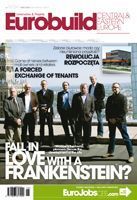The Republic of Macedonia is one of the few countries in the region yet to catch the attention of investors. Are we about to see the transformation of the country’s real estate sector following the pattern of some of its larger neighbours?Nathan North What’s in a name? Well, quite a lot, if you asked the inhabitants of what we officially have to refer to as the Former Yugoslav Republic of Macedonia. Although the country appears to have all the elements in place to repeat the successes of similar post-communist states, there remains one serious stumbling block – the issue surrounding its name. For its citizens, it is crucial to their national identity that their country is called Macedonia; but to the neighbouring Greeks, this would represent a potential threat to the status of their own region bearing the same name






























































